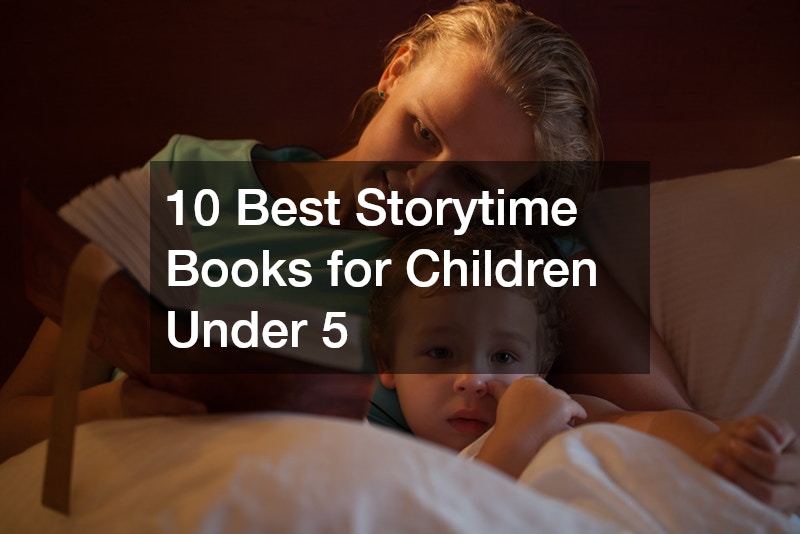
Storytime books are a delightful and educational experience for young children, providing an opportunity for both learning and bonding. These books not only help in the development of language and literacy skills but also serve as a means to spark imagination and creativity. Reading aloud to children has been proven to have a profound impact on their cognitive and emotional development. It fosters a love for literature that often lasts a lifetime. In our busy, technology-driven world, taking the time to read together can be a comforting ritual that strengthens the relationship between child and caregiver. The gentle art of storytelling paired with compelling illustrations captivates the young mind, making complex emotions understandable and encouraging empathy. From vibrant illustrations to soothing narratives, storytime books encompass a variety of themes and characters that children can learn from and relate to. The selections discussed in this article exemplify the very best in children’s literature, offering a soothing yet stimulating experience through pages that turn like bonds being knit stronger. Whether shared in the coziness of a childcare daycare or at bedtime at home, these storytime books bring smiles and spark imaginations. As we explore these top ten treasures, each selection highlights the unique richness of narrative styles and rapport offered through reading. Here’s a closer look at some of the most beloved stories that have enchanted young readers across generations.
1. Goodnight Moon by Margaret Wise Brown
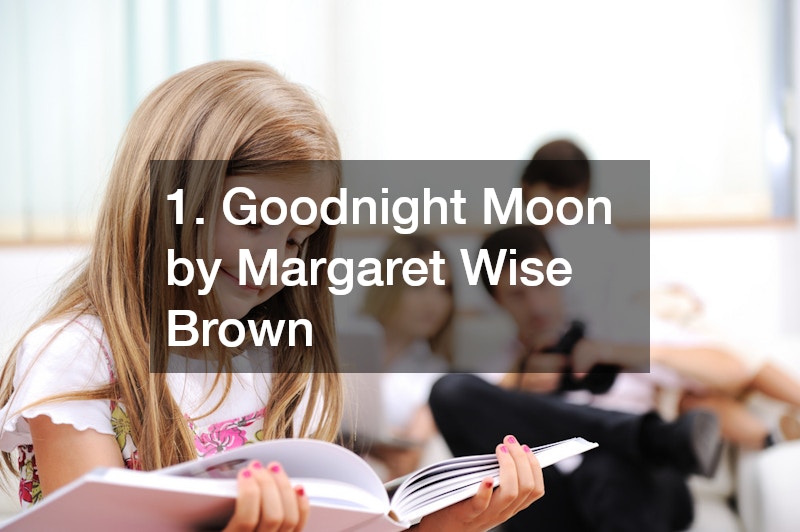
Goodnight Moon is perhaps one of the most iconic storytime books, beloved by children and parents alike. First published in 1947, this classic bedtime story has withstood the test of time due to its soothing rhythm and comforting narrative. The story takes readers through a series of gentle goodnights, creating a lulling environment perfect for children winding down after a busy day filled with the bustling activities of childcare daycare.
The book’s minimalist illustrations by Clement Hurd complement the rhythmic text, creating a warm and cozy world where every element in the “great green room” is acknowledged. The slow and deliberate pace of saying goodnight to all the objects, from the moon to the light and the “red balloon,” helps instill a sense of calm and security in young readers. Parents often find Goodnight Moon a valuable tool in establishing a relaxing bedtime routine, transitioning their children from the day’s adventures to a restful sleep.
The impact of Goodnight Moon extends beyond its calming effect, as it also contributes to language development. It helps little ones recognize and name objects while introducing them to the concepts of sequence and predictability. Whether read in the soothing environment of a child’s bedroom or the nurturing setting of a childcare daycare, this story remains unmatched in its ability to calm the mind and spirit, providing comfort that lingers long after the final “goodnight.”
2. Brown Bear, Brown Bear, What Do You See? by Bill Martin Jr. and Eric Carle
Another staple in children’s literature, Brown Bear, Brown Bear, What Do You See?, captures the attention of young readers with its simple yet impactful rhymes and vibrant illustrations. Created by the dynamic duo of Bill Martin Jr. and Eric Carle, this book uses repetition and predictability to engage children, promoting memorization and language skills. It’s a popular storytime book choice in many settings, including those overseen by a child custody lawyer who values educational resources.
The narrative revolves around a rhythmic exchange where various animals describe what they see, leading to a colourful celebration of vision and perception. Eric Carle’s distinctive collage-style artwork adds layers of visual engagement, inviting children to anticipate and vocalize what comes next. This predictability brings a sense of confidence and achievement to young readers, as they quickly learn to recognize the sequence of the story.
Besides its obvious appeal and educational value, Brown Bear, Brown Bear, What Do You See? exemplifies the best features of storytime books—it captures interest, encourages participation, and enhances comprehension. Used regularly in classrooms, therapy sessions, or during special bonding time at home, this book reinforces the idea that learning can be joyous and visually stimulating, making it a must-have in any child’s collection.
3. Guess How Much I Love You by Sam McBratney
Few narratives capture the depth of love as tenderly as Guess How Much I Love You by Sam McBratney. This gentle storytime book explores the affectionate relationship between Big Nutbrown Hare and Little Nutbrown Hare, through a charming conversation about the vastness of their love for one another. This message resonates with caregivers in every setting, including child care services that understand the power of nurturing connections.
The book’s endearing illustrations by Anita Jeram depict the hares in beautiful, natural settings, enhancing the warmth found in their heartfelt dialogue. The simple text facilitates an emotional connection that resonates with children, helping them express emotions that might otherwise remain unspoken. With each comparison of love, from “as high as I can reach” to “as far as the moon,” young readers learn about the immeasurable extent of love.
Guess How Much I Love You is a wonderful example of how storytime books can address complex themes like love and emotional bonds in a manner accessible to children. It’s frequently used in child care services to reinforce feelings of safety, security, and belonging. Even beyond its comforting narrative, this book provides a framework for children to explore their own feelings and develop healthy emotional literacy.
4. Where’s Spot? by Eric Hill
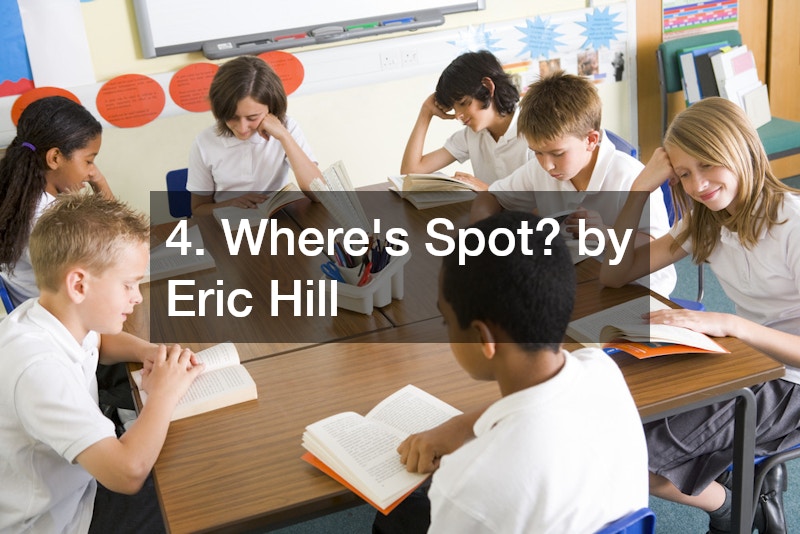
The anticipation and surprise found in Eric Hill’s Where’s Spot? make it a delightful addition to any collection of storytime books. This interactive narrative follows a mother dog searching for her puppy, Spot, creating a sense of intrigue and excitement for young readers. It’s frequently touted by the best family lawyers who recognize its role in fostering early reading skills and engagement with literature.
The book’s innovative “lift-the-flap” format allows children to actively participate in the story, making each reading session an adventure as they search for Spot in various locations around the house. This interactivity enhances children’s fine motor skills and also provides cognitive stimulation as they hypothesize about Spot’s whereabouts. Every page turn brings a new discovery, contributing to a rewarding and dynamic reading experience.
Where’s Spot? stands out among storytime books for its ability to involve young readers directly in the unfolding narrative. The simple plot and artwork are highly effective in sustaining attention and interest, making it a versatile choice for environments ranging from home to educational settings. This book helps in instilling a sense of curiosity and joy in reading, providing a foundation for a lifelong love of books.
5. The Very Hungry Caterpillar by Eric Carle
Eric Carle’s The Very Hungry Caterpillar is a masterpiece that combines an engaging storyline with educational content, making it a staple among storytime books. The book follows the transformation of a caterpillar into a butterfly, illustrating concepts of growth, time, and change. It’s celebrated in both homes and communities, such as assisted living communities, where multigenerational storytimes are cherished.
The vibrant illustrations capture children’s imaginations as the caterpillar eats its way through various foods, each page offering both visual and sensory experiences. As children recount the caterpillar’s adventures, they practice counting and explore days of the week—a subtle yet effective educational feature embedded within the narrative. Carle’s use of textured, colorful artwork further enriches children’s engagement with the book.
The Very Hungry Caterpillar exemplifies how storytime books can be both entertaining and informative. Its universal themes of metamorphosis and celebration of nature resonate with readers of all ages, facilitating discussions about life cycles and growth. This book’s presence in a childcare setting or an assisted living community fosters connections across generations, emphasizing reading as a shared joyful experience.
6. We’re Going on a Bear Hunt by Michael Rosen and Helen Oxenbury
Few storytime books invite as much interaction and movement as We’re Going on a Bear Hunt by Michael Rosen and Helen Oxenbury. This exuberant tale follows a family as they embark on an adventure to find a bear, capturing young readers with its rhythmic text and bold illustrations. It’s an essential read in schools and groups focusing on motor skills, such as disability living services.
The repetitive language and rhythmic pace of the story invite participation, allowing children to join in with the narrative through actions and chanting. As the family traverses different landscapes, children learn about consistency, sequence, and anticipation—key components of literacy and cognitive development. Oxenbury’s expressive illustrations further cement the book’s appeal, providing visual cues that enhance understanding.
We’re Going on a Bear Hunt offers educators and caregivers a dynamic way to engage children in storytelling that goes beyond the pages, utilizing physical activity and vocal expression. It embodies the multifaceted potential of storytime books by crafting a narrative that is exciting, participatory, and educational. This story creates memorable experiences that deepen children’s connection to books and storytelling.
7. Llama Llama Red Pajama by Anna Dewdney
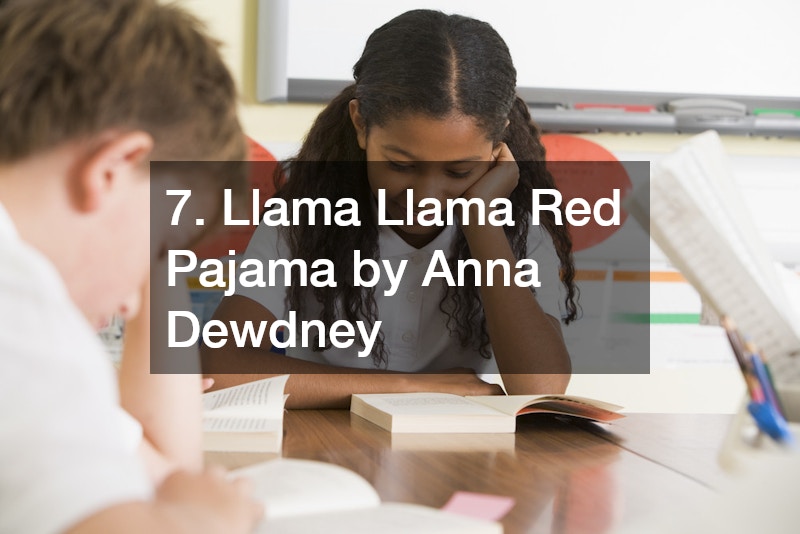
Anna Dewdney’s Llama Llama Red Pajama captures the universal experience of bedtime anxiety in a charming narrative that resonates with both children and parents. The rhythmic text and relatable storyline make it a perfect choice for storytime sessions, whether at home or within groups addressing emotional health, such as those undergoing Alzheimers disease treatment.
This storytime book features a young llama experiencing doubt and fear after being tucked into bed and left alone. Dewdney adeptly portrays the emotional dynamics of a child’s mind, using soothing text to remind young readers that they are safe and loved, even when they feel lonely. The colorful, playful illustrations further bring the story to life, adding warmth and relatability.
Llama Llama Red Pajama is more than just a bedtime story; it addresses childhood anxieties in a comforting manner that encourages open communication. By normalizing fears and reassuring children of their caregivers’ presence, it helps build emotional resilience. This book is a testament to how storytime books can foster understanding and reassurance, supporting children’s emotional well-being.
8. Dear Zoo by Rod Campbell
Rod Campbell’s Dear Zoo is an engaging lift-the-flap story that has entertained young readers for decades. This playful tale of a child writing to the zoo and receiving a series of unsuitable pets is a favorite among storytime books in venues like the local Montessori school. Each page offers surprises that delight the curious minds of toddlers.
The book uses repetitive language and a consistent structure, enhancing children’s comprehension as they explore the various animals behind each flap. Campbell’s simple, bold illustrations capture each animal’s unique characteristics, adding to the overall excitement and delight of discovery. As children predict and reveal the animals, they also learn about attributes, sizes, and sounds gleaned from the story.
Dear Zoo exemplifies how storytime books can combine learning with fun, making education an enjoyable pursuit for the youngest readers. The format captures attention while providing a mini-lesson on problem-solving and decision-making. Its interactive elements encourage hands-on engagement, promoting lifelong skills of curiosity and investigation.
9. Chicka Chicka Boom Boom by Bill Martin Jr. and John Archambault
The lively rhythm and playful energy of Chicka Chicka Boom Boom, created by the duo of Bill Martin Jr. and John Archambault, make it a unique selection amongst storytime books. This alphabet book, which tells the story of letters racing to the top of a coconut tree, captivates children with its infectious rhythm and colorful imagery. Its format is well-regarded in educational settings, such as a pregnancy resource center where both children and parents benefit from literacy initiatives.
The narrative merges rhythmic gallops with visual splendor, helping children learn the alphabet in an engaging way. Lois Ehlert’s bold and bright illustrations make each letter memorable, capturing the excitement that’s key to the book’s lasting appeal. The repetition and alliteration used in the text reinforce letter recognition, phonetic awareness, and vocabulary skills.
Chicka Chicka Boom Boom demonstrates the joy of learning through the musicality of language, making it an essential resource in literacy development. This book stands as a triumphant example of how storytime books can transform educational content into a joyous experience. Its upbeat tempo and vibrant style promise an unforgettable reading adventure that makes letters and words dance in young minds.
10. The Little Blue Truck by Alice Schertle
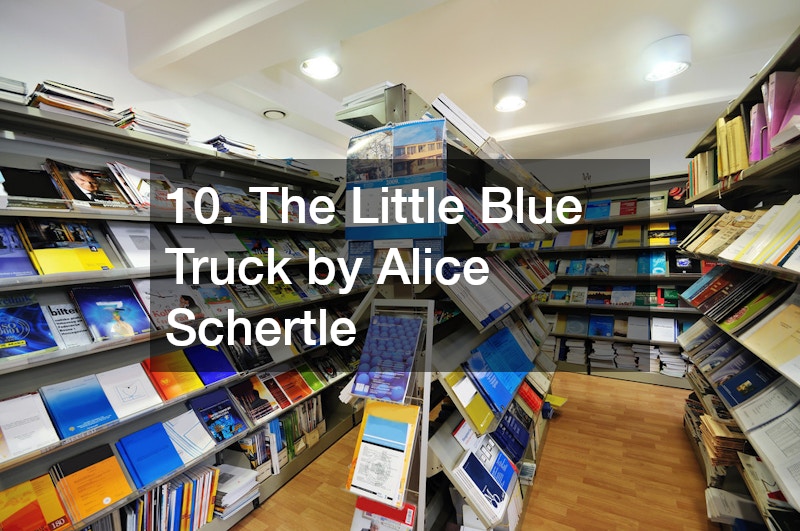
The Little Blue Truck, penned by Alice Schertle, is a delightful tale of friendship and teamwork adored among storytime books in community settings like animal hospitals where themes of communication and compassion are celebrated. The story follows the kind-hearted journey of a friendly little blue truck, who learns the importance of helping others and building friendships.
Schertle’s use of rhythmic and rhyming language brings the narrative to life, as children are drawn into the truck’s world with anticipation and enthusiasm. Jill McElmurry’s illustrations depict a vibrant landscape, filled with warm characters and a message about the power and importance of helping one another. The interplay of text and image teaches children about cooperation and empathy in an engaging manner.
The Little Blue Truck exemplifies how storytime books can serve as valuable teaching tools, demonstrating life’s important lessons through simple yet profound narratives. The story’s playful tones and relatable themes resonate with children and caregivers alike, offering a gentle reminder of the joys of friendship and community. By fostering values of kindness and teamwork, this book provides a meaningful narrative that enriches the storytime experience.
The world of storytime books offers a kaleidoscope of experiences for children, blending education with entertainment in a way that fosters lifelong literacy and emotional development. Each book explored in this article provides unique contributions to a child’s understanding of the world, demonstrating the multifaceted role storytime books play in nurturing young minds. Whether addressing themes of love and assurance in Guess How Much I Love You and Goodnight Moon, or encouraging curiosity and interaction through Where’s Spot? and Dear Zoo, these stories form the foundation for a child’s journey of discovery. As seen in settings ranging from a local Montessori school to assisted living communities, the shared experience of reading strengthens intergenerational bonds and provides a comforting sense of continuity. Storytime serves as a portal to imagination, empowering children to explore emotions, learn about different perspectives, and develop critical thinking skills. The beauty of these books lies in their ability to convey complex ideas in an accessible manner—instilling values and sparking creativity with every turn of the page. Ultimately, the selection of storytime books featured here illustrates their irreplaceable role as a cornerstone of early childhood education and development, offering children pathways to dream, learn, and grow.
